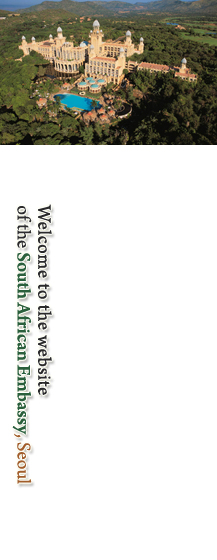
 |
 |
 |
 |
 |
 |
 |
 |
 |

 |
|
South Africa’s economy is inextricably linked to that of the southern African region, and its continued growth to the economic recovery of the continent through the New Partnership for Africa’s Development (NEPAD).
The centrepiece of South Africa’s foreign economic policy is SADC. The SADC trade protocol which came into effect in September 2000 provides for the phasing down of tariffs of 11 of the 14 SADC member countries. The participating member countries are from the sub-Saharan region, excluding SADC members Angola, the Democratic Republic of Congo and Seychelles. This trade bloc has a combined population of 160-million. The participating member countries hope to establish a free trade zone.
Within the SADC, South Africa, Botswana, Lesotho, Namibia and Swaziland have organised themselves into the Southern African Customs Union (SACU). Under the present SACU agreement, participating member countries South Africa, Botswana, Lesotho, Namibia and Swaziland have totally abolished internal tariff barriers. Their respective governments are presently ratifying a new agreement, which was finalised on 25 October 2002. The main change introduced in the new agreement pertains to revenue sharing. South Africa is a founding member of the General Agreement on Tariffs and Trade (1947) and is an active member of the World Trade Organisation. South Africa has entered into preferential agreements with the US, EU and sub-Saharan countries.
Europe is the largest source of investment for South Africa and accounts for almost half of South Africa’s total foreign trade. The United Kingdom is the third largest trading partner and the largest foreign investor in South Africa. Germany is South Africa’s second biggest trading partner. The Netherlands is the fifth largest destination for South African exports and the fifth largest investor in South Africa. A trade, development and co-operation agreement containing a Free Trade Agreement (FTA) went into effect between South Africa and the European Union on 1 January 2000. Under the FTA, the EU is committed to the full liberalisation of 95% of South African imports over a 10-year transitional period, while South Africa is to liberalise 86% of EU imports over a 12-year transitional period.
The USA is South Africa’s number one trading partner in terms of total trade. South Africa is a beneficiary of the USA’s Generalised System of Preferences (GSP), which grants duty-free treatment for more than 4 650 products, and of the Africa Growth and Opportunity Act, in terms of which an additional 1 783 products were added to the existing GSP products, until September 2008. More detailed information is available from the US government's website. South Africa’s major trading partners in South America are Brazil, Argentina, Chile, Mexico and Peru. South Africa and the MERCOSUR states signed a Framework Agreement in 2000 which commits them to working towards a free trade agreement. Between 1995 and 2002, trade with the Indian Ocean Rim Association for Regional Co-operation accounted for 14% of South Africa’s global trade. Trade with India has grown particularly rapidly. Japan is South Africa’s biggest trading partner in Asia and its fourth largest overall. South Korea is South Africa’s fourth largest trading partner in Asia. For further details on South Africa-South Korea trade relations, please click here. In south-east Asia, South Africa’s strongest ties are with Malaysia, today its second largest investor. |
